-

kenwood kw-70
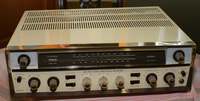
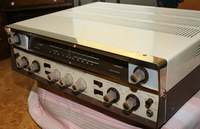

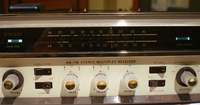
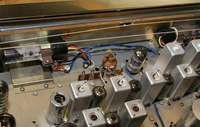



|
The
most interesting and characteristic TRIO model was the
KW-70. It was from the early 60's and had a decoration
typical of the 50's. It stood out among most of the
equipment produced in those years with its unique
"vintage" look in pastel colors. The electronics of the
KW-70 is very complex and there is nothing to fault it.
The input of the FM tuner features a 6AQ8 / ECC85 dual
triode head that provides three-point tuning. One of the
ECC85 sections works in the AFC (automatic frequency
control) system. After the head, an intermediate frequency
block on four tubes ended with a demodulator on a vacuum
duodiode (i.e. a 6AL5 / EAA91 tube). Behind the tuner is
the MPX decoder block on the 7247 and 6AQ8 / ECC85 tubes
providing a stereo signal with high separation. This model
was a "world" model with an extended VHF range of 80 to
108 MHz. In addition to the FM range, the receiver allowed
the reception of medium waves 535 - 1605 kHz. The
receiving part of the tuner is complemented by two magic
eyes - EM84 tubes. One of them was used to indicate the
level of the received TUNING BEAM signal, while the other
one was the MPX signal indicator - STEREO INDICATOR. Two
photos show the receiver with stereo reception and without
this signal. Using the fluorescent tube as an indicator of
the MPX signal was an infrequent solution, and KENWOOD
only took advantage of it on this one model. Correction
preamplifiers for signals from MAG / XTAL turntables and
the TAPE HD tape head were built on the basis of 12AX7 /
ECC83 tubes. After that, the next 12AX7 / ECC83 worked in
the band and filter control block. Like all decent
equipment at that time, the KW-70 contained RUMBLE filters
- rumble and NOISE, i.e. noise. A nice addition was the
headphone jack with a speaker switch. To turn on the
receiver, you had to turn the knob on the left side of the
scale - symmetrical to the tuning knob. The driver tubes
are 6AN8 and the end tubes are 7189 / EL84 / 6P14P. The
final amplifier was a typical Push & Pull with
adjustable bias. Kenwood did not use any circuits to
regulate this bias in his equipment and all the output
tubes received the same voltage on the first grids -14.8V.
The power supply is based on a proven solution in the form
of a voltage doubler.
Kenwood used the solutions found in this model in
virtually every other model using the 7189 output tubes,
and the equalizing preamplifier was also a standard
design. The manufacturer gave the receiver's power of 32.5
W of musical power and 25 W of continuous power. The
resistance of the loudspeakers, regulated by a suitable
connection of a cable terminated with "forks", was 4, 8 or
16 ohms. The ability to work with 4 ohm loudspeakers was
quite rare in Japanese (as opposed to American) equipment.
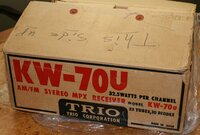
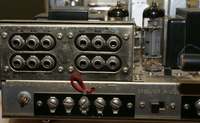
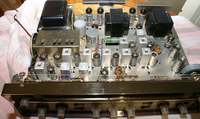 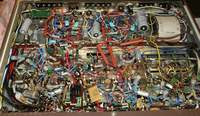
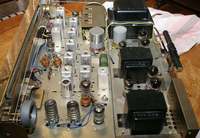 |
Main page
Previous page Contact
|